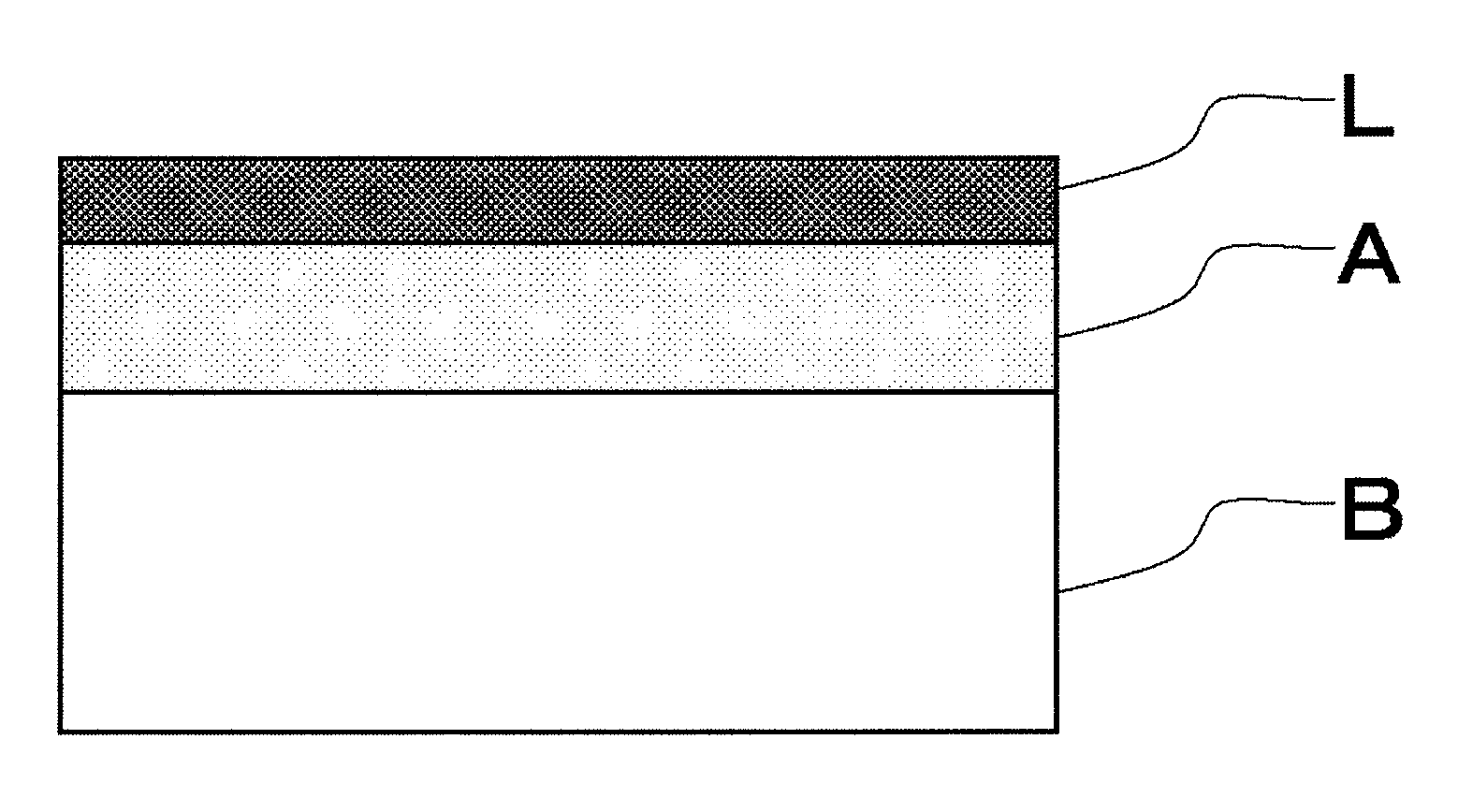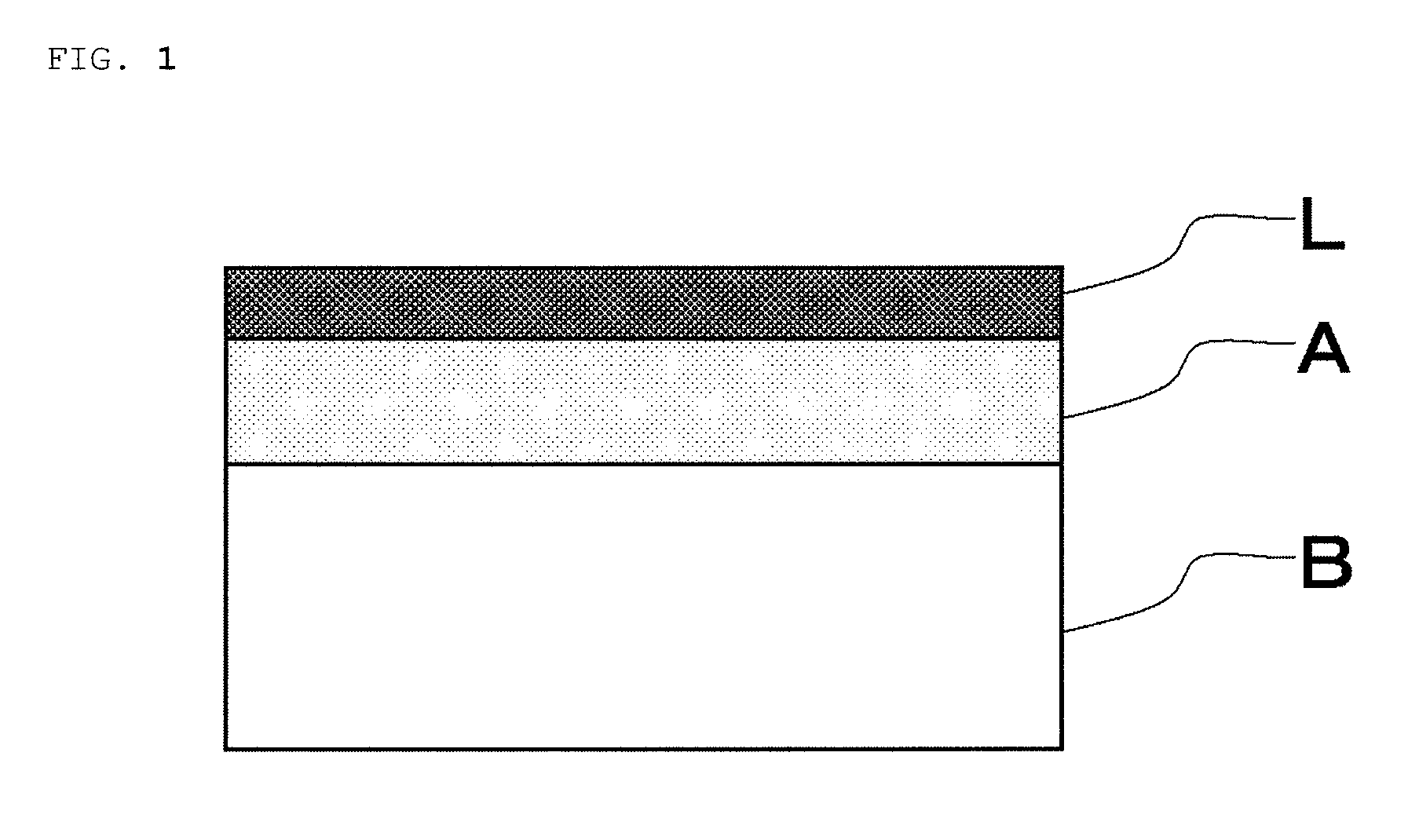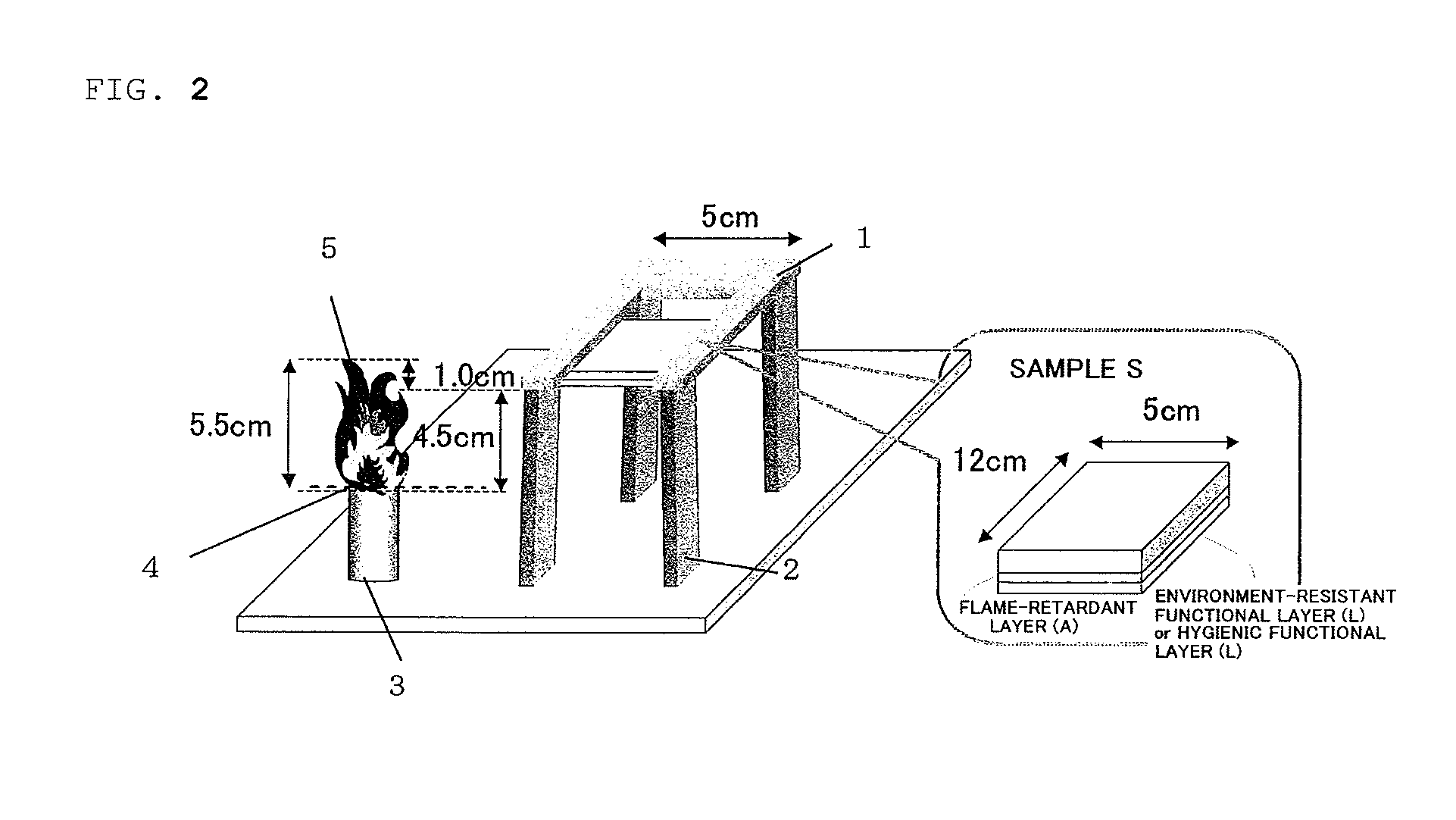Flame-retardant polymer member with environmental resistance and flame-retardant polymer member with hygienic property
a flame-retardant polymer and environmental-resistant technology, which is applied in the direction of synthetic resin layered products, transportation and packaging, natural mineral layered products, etc., can solve the problems of reduced resin sheet transparency, reducing the transparency of resin sheets, and most printed materials burn out, etc., to achieve effective expression, excellent anti-fouling performance, and effective expression
- Summary
- Abstract
- Description
- Claims
- Application Information
AI Technical Summary
Benefits of technology
Problems solved by technology
Method used
Image
Examples
examples
[0501]Hereinafter, the present invention is described in more detail by way of examples, but the present invention is not limited to these examples.
[0502]It should be noted that a biaxially stretched polyethylene terephthalate film having a thickness of 38 μm (trade name: “MRN38,” manufactured by Mitsubishi Chemical Polyester Film) one surface of which had been subjected to a silicone-based release treatment was used as each of cover films and base material films used in the following respective examples.
[0503]
[0504]A polymer sheet was evaluated for the following flame retardancy.
[0505]An evaluation for flame retardancy was performed by the horizontal firing test illustrated in FIG. 2. FIG. 2 illustrates a measurement method. Each polymer sheet was cut into a piece measuring 5 cm by 12 cm and then the piece was subjected to the evaluation. It should be noted that the cover films on both surfaces of each polymer sheet were peeled.
[0506]In each of the environment-resistant functional ...
synthesis example 1
Preparation of Syrup (b-1)
[0538]50 Parts by weight of isobornyl acrylate, 50 parts by weight of lauryl acrylate, 0.1 part by weight of a photopolymerization initiator (trade name: “IRGACURE 651,” manufactured by Ciba Specialty Chemicals Inc.), and 0.1 part by weight of a photopolymerization initiator (trade name: “IRGACURE 184,” manufactured by Ciba Specialty Chemicals Inc.) were stirred in a four-necked separable flask provided with a stirring machine, a temperature gauge, a nitrogen gas-introducing tube, and a cooling tube until the mixture became uniform. After that, bubbling was performed with a nitrogen gas for 1 hour to remove dissolved oxygen. After that, UV light was applied from the outside of the flask by using a black-light lamp to perform polymerization. At the time point when a moderate viscosity was obtained, the lamp was turned off and the blowing of nitrogen was stopped. Thus, a syrupy composition having a rate of polymerization of 7% part of which had been polymeriz...
synthesis example 2
Preparation of Syrup (a-1) Containing Layered Inorganic Compound
[0539]30 Parts by weight of a layered clay mineral (trade name: “Lucentite SPN,” manufactured by Co-op Chemical Co., Ltd., shape: flat plate-like shape) were added to a monomer mixture formed of 100 parts by weight of cyclohexyl acrylate, 0.2 part by weight of 1,6-hexanediol diacrylate, 0.2 part by weight of a photopolymerization initiator (trade name: “IRGACURE 651,” manufactured by Ciba Specialty Chemicals Inc.), and 0.2 part by weight of a photopolymerization initiator (trade name: “IRGACURE 184,” manufactured by Ciba Specialty Chemicals Inc.), and then the whole was left at rest at room temperature (25° C.) for 24 hours. Thus, the monomer mixture (opaque) to which the layered clay mineral had been added was obtained. After that, the monomer mixture to which the layered clay mineral had been added was irradiated with an ultrasonic wave from an ultrasonic disperser (manufactured by NIPPON SEIKI CO., LTD.) at an irradi...
PUM
 Login to View More
Login to View More Abstract
Description
Claims
Application Information
 Login to View More
Login to View More - R&D
- Intellectual Property
- Life Sciences
- Materials
- Tech Scout
- Unparalleled Data Quality
- Higher Quality Content
- 60% Fewer Hallucinations
Browse by: Latest US Patents, China's latest patents, Technical Efficacy Thesaurus, Application Domain, Technology Topic, Popular Technical Reports.
© 2025 PatSnap. All rights reserved.Legal|Privacy policy|Modern Slavery Act Transparency Statement|Sitemap|About US| Contact US: help@patsnap.com



